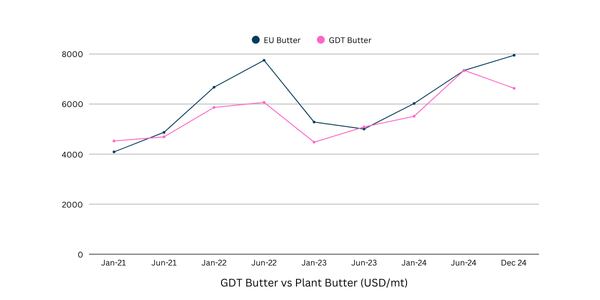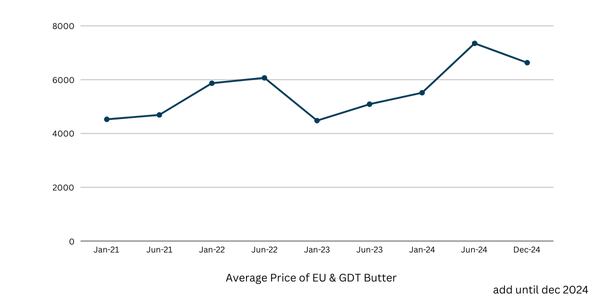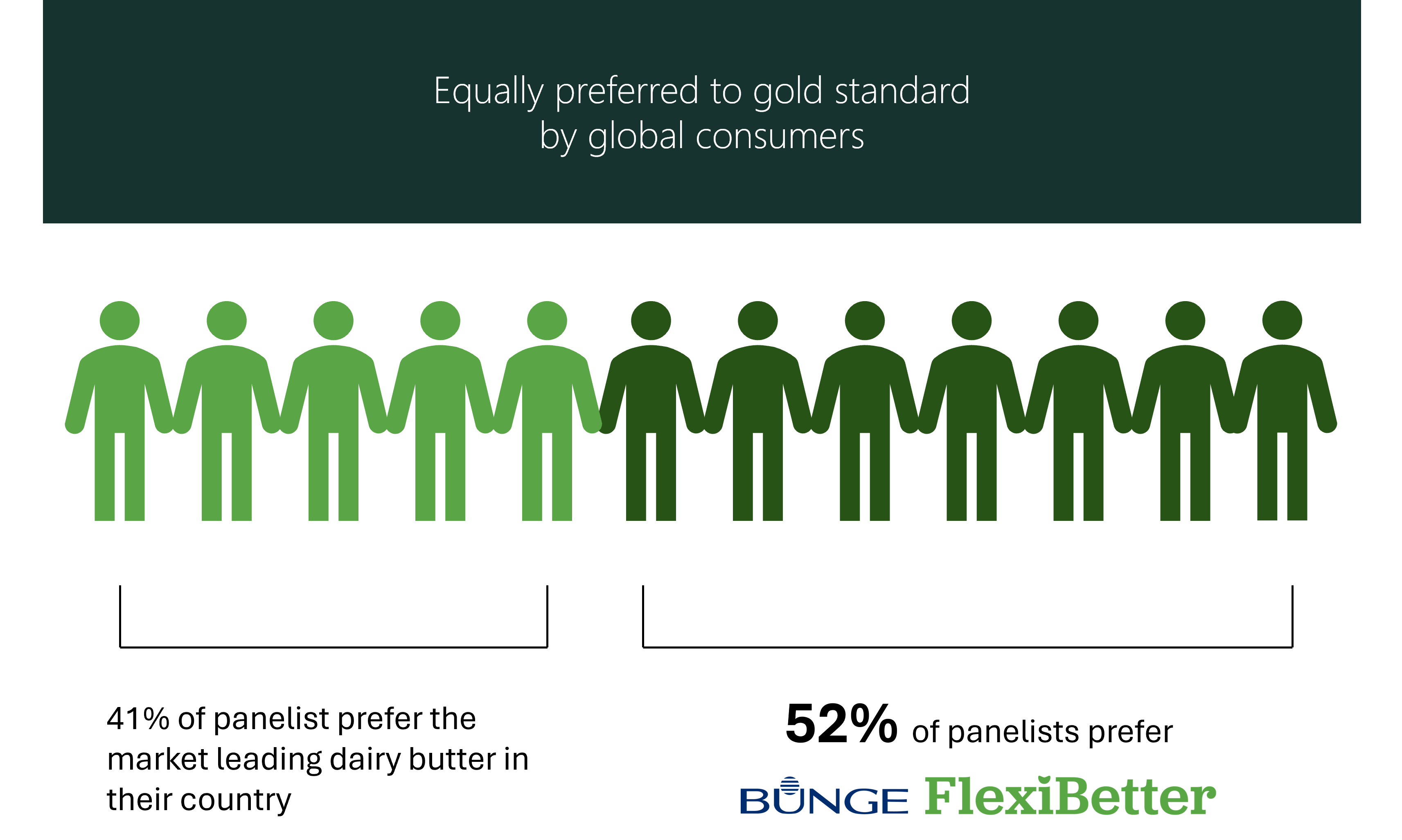Today’s consumers aren’t just looking for alternatives to dairy butter; they want options that can deliver the same benefits as dairy butter and that don’t come at a higher price. How are high-performing Dairy Butter Equivalents (DBE) set to lead the way?
According to Mintel, the plant-based food market is projected to experience significant growth.¹ Globally, the market was valued at $29 billion in 2020 and is expected to grow to $160 billion by 2030, indicating a strong interest and expansion in plant-based eating.¹
Within this landscape, plant-based dairy alternatives are leading the change. Dairy-free butter, in particular, has seen a 45% year-over-year increase in retail sales.² But as demand surges, so do challenges. How can companies adapt to this rapid shift without compromising on performance, cost and sustainability goals?


The triple challenge for food manufacturers
For food manufacturers seeking to use plant-based dairy alternatives in their formulations, it’s not as simple as swapping ingredients. Manufacturers face three interconnected hurdles:
Performance trade-offs Many plant-based butters struggle to replicate the taste, texture and functionality of dairy butter. Research by Euromonitor indicates that taste is one of the top five reasons why consumers shy away from plant-based products.⁴
A June 2024 market research study suggests that 74% of US consumers are equally or more likely to buy baked goods if made with dairy-free butter, so long as it tastes as if made with dairy butter.⁴ These results further underscore the importance of taste to consumers when considering purchasing products made with dairy-free butter.
These challenges are compounded by rising competition among( dairy-free butter suppliers. Startups and legacy brands alike are racing to capture market share, creating a crowded – and often confusing – landscape for manufacturers seeking reliable partners.
Cost volatility Traditional dairy butter prices have fluctuated greatly in recent years for a variety of reasons, ranging from climate-related impacts on dairy farming to geopolitical tensions. The price of butter has risen steadily in recent years, with a 37% year-on-year increase recorded in the Asia market between 2023 and 2024.³
Sustainability pressures With increased regulatory pressures towards decarbonisation and consumers demanding transparency, dairy butter producers are under scrutiny to reduce the negative environmental impacts of dairy butter’s methane emission, land/water use and pollution from feed.
A new era of innovation
Bunge FlexiBetter is a dairy butter equivalent designed to address these pain points head-on. Unlike conventional alternatives, Bunge FlexiBetter is not just a substitute – it is a strategic solution engineered for performance, cost efficiency and sustainability.
Why Bunge FlexiBetter stands out:
Unmatched baking performance
Bunge FlexiBetter replicates the critical properties of dairy butter in baked goods, ensuring the same crispiness, puffiness and airy texture that define high-quality laminated pastries like croissants. From flaky layers to moist cakes and cookies with perfect texture, Bunge FlexiBetter delivers results that meet consumer expectations.
The plant-based sector is competitive, but Bunge FlexiBetter’s differentiation lies in its adaptability. It is customisable for a wide range of applications, not just for pastries, and performs equally well in sauces, gravies and other foodservice staples.
Moreover, Bunge’s decades of expertise in oil structuring and lipid science provide a competitive advantage in its work with customers to demonstrate that Bunge FlexiBetter is not just a trend-driven product – it is a scalable, future-proof solution.

Significant cost savings
Compared to traditional dairy butter, Bunge FlexiBetter offers a cost-effective solution with stable pricing which minimises cost volatility and helps food manufacturers manage budgets more effectively. It also offers consistent supply, enabling businesses to manufacture their products without disruption.
Sustainability for a better future
Sustainability is at the heart of Bunge FlexiBetter. Based on a third party study on a similar product in Bunge’s portfolio, when compared to dairy butter Bunge FlexiBetter achieves a reduction in greenhouse gas emissions, providing manufacturers with a way to reduce their products’ environmental footprint without compromising on performance. This aligns with growing consumer demand for eco-friendly, plant-based alternatives.
Innovation for forward-thinking manufacturers
The transition to plant-based alternatives is not a passing fad – it is a fundamental realignment of consumer preferences and planetary needs. For manufacturers, the question is not whether to adapt but how.
Bunge FlexiBetter offers a pathway for food manufacturers to navigate this shift with confidence. By delivering uncompromised quality, lower costs and reduced carbon emissions, Bunge FlexiBetter allows brands to meet today’s demands while future-proofing their operations.
As the industry evolves, collaboration will be key. Discover the science, savings and sustainability behind Bunge FlexiBetter. Talk to Bunge’s team for tailored insights or connect with Bunge’s team at FSA@bunge.com.
References
- Mintel Food & Drink. Private label: convenience matters. Katya Witham, Associate Director. July 22, 2024.
- Euromonitor. Dairy Products and Alternatives: Half-Year Update H1 2024 .
- Global Dairy Trade.
- Euromonitor. Plant-Based Foods Face Key Challenges.
*This article is intended for general educational and informational purposes only*




